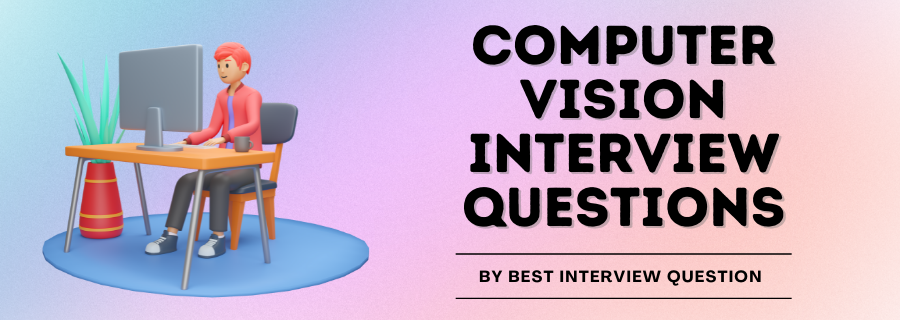
The computer Vision field is a potential career option for those who have an interest in machine learning and Artificial intelligence. It's an emerging field with less competition but ensures a promising career growth. The companies like Tesla, BMW, Volvo, Google cloud platform, Amazon cloud, and many other AI tech giants who are making self-driving cars and algorithms running with the help of AI, need efficient employees who have knowledge of this technology. Here we are providing you TOP 10 Computer Vision interview questions and answers that will help you gain a good understanding of this topic and at the same time will create a good impact on your interviews.
Most Frequently Asked Computer Vision Interview Questions
Here in this article, we will be listing frequently asked Computer Vision Interview Questions and Answers with the belief that they will be helpful for you to gain higher marks. Also, to let you know that this article has been written under the guidance of industry professionals and covered all the current competencies.
Computer Vision uses images and videos to understand a real-world scene. Just like Humans use eyes for capturing light, receptors in the brain for accessing it, and the visual cortex for processing it. Similarly, a computer understands images, videos, or a real-world scenario through machine learning algorithms and AI self-learning programming.
An OpenCV is open for all and free cross-platform where you get a library of real-time computer vision programming functions. It is developed by Intel and is mostly written in the C++ programming language. A JavaScript version is also available as OpenCV.js which is built for web platforms.
Some machine learning libraries available in OpenCV are:
Artificial Neural Networks, Random Forest, Support Vector Machine, Decision Tree Learning, Convolution Neural Networks, Boosting and Gradient Boosting Trees, Expectation-Maximization algorithm, Naive Bayes classifier, K-nearest neighboring algorithm.
Image filters used in OpenCV are:
Bilateral Filter, Blur, Box Filter, Dilate, Build Pyramid, Erode, Filter2D, Gaussian Blur, Deriv, and Gabor Kernels, Laplacian, and Median Blur.
The face recognition algorithm is basically the computer application that is used for tracking, detecting, identifying, or verifying the human faces simply from the image or the video that has been captured using the digital camera.
Some popular but evolving algorithms are:
- PCA- Principal Component Analysis
- LBPH- Local Binary Pattern Histograms
- k-NN (nearest neighbors) algorithm
- Eigen’s faces
- Fisher faces
- SIFT- Scale Invariant Feature Transform
- SURF- Speed Up Robust Features
LISP, Prolog, C/C++, Java, and Python.
A Color Model is a coordinate system and a subset of visible colors. With "Color Model" we create a whole range of colors from a limited set of primary colors like RGB (Red Green Blue). Color Models are of two types: Additive and Subtractive.
Dynamic Range is a ratio of small and large values that is assumed by a certain quantity. It is used in signals, photography, sounds, and light. From a photographic point of view, it is a ratio of minimum and maximum measuring light intensity or the lightest and darkest regions also called color contrast.
A digital image is an image that is comprised of the elements of the picture, they are also admitted as pixels. Each pixel is with the finite and the discrete numbers of the numerical representation which belong to its intensity and the gray level which is considered as it’s output from the functions of the two-dimensions that is feed by the input of spatial coordinates those are denoted by the x-axis and y-axis.
Mach Band Effect is an optical illusion. It emphasizes the differentiation between edges of the somewhat varying shades of grey when they reach each other.
The extreme left side is dark grey and it converts into the lighter shades as they move to the right side of the plate.
We use sampling and Quantization to convert analog images to digital images. An image has two things.
1. Coordinates
Digitizing of coordinates is called Sampling. That is, converting the coordinates of the analog images to the digital images.
2. Intensity/Amplitude
Digitizing of Amplitude or Intensity is called Quantization. That is converting the Amplitude or Intensity of an analog image to a digital image.